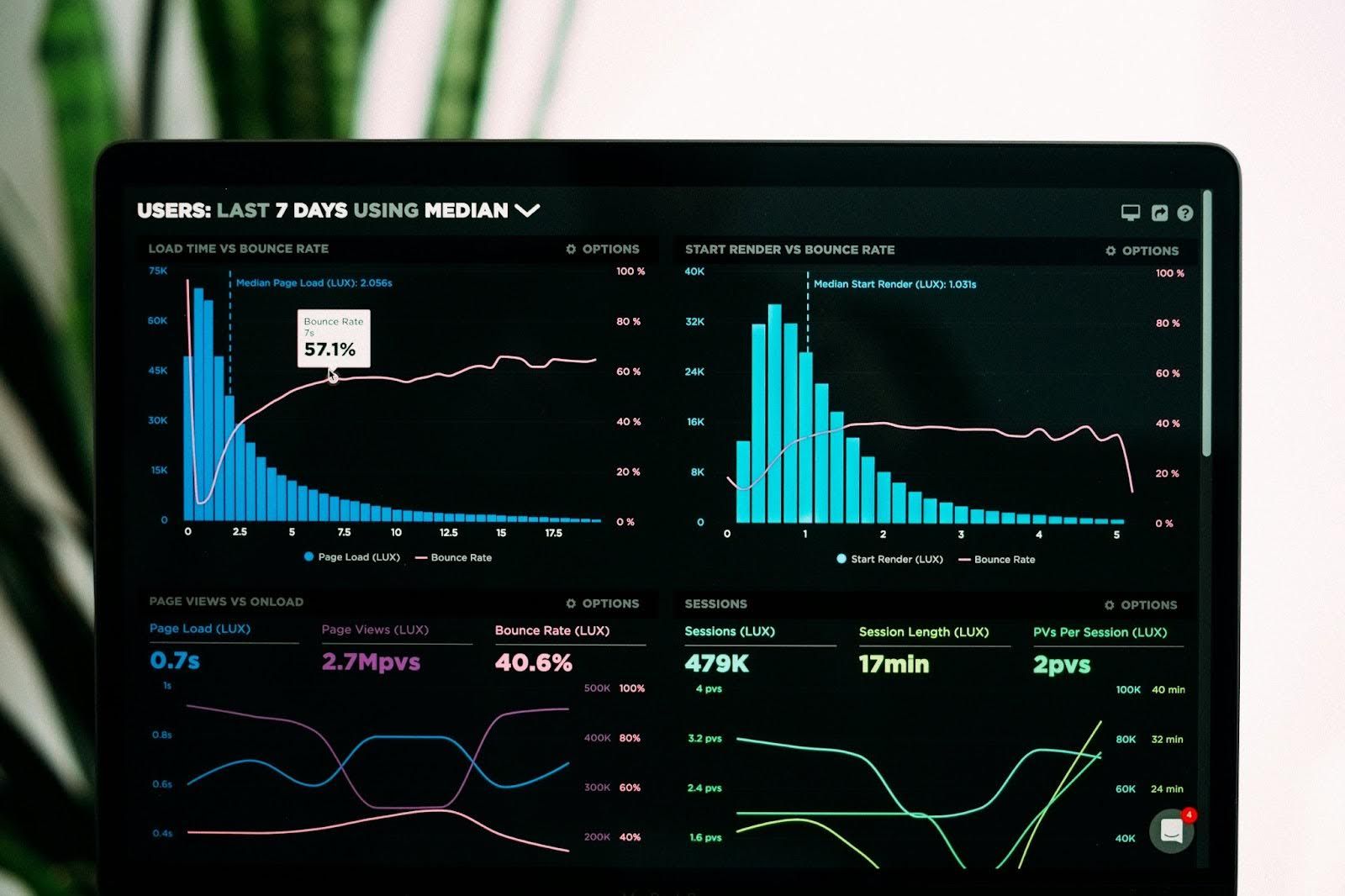business resources
Optimizing Supply Chain Operations for Enterprise Growth and Efficiency
13 May 2025, 0:51 am GMT+1
In the modern digital age, your supply chain is the pulse of your business. It efficiently moves raw materials from your suppliers to your production lines. If it all goes according to plan, your chain should deliver finished goods to your waiting customers.
However, in the event that anything goes wrong, you will feel the pressure coming down. Even a single breakdown can throw everything off balance.
As a result, your costs will rise, and your profit margins will shrink. But, what if you could see trouble before it strikes?
In this article, we explore how to turn your supply chain into your strongest competitive advantage.
Supply chain for business growth
From raw materials to customer delivery
Your supply chain links every step of a product’s creation. It begins when suppliers send raw materials to your facilities. Then, it continues through your manufacturing process. Which includes extensive quality checks.
The next step is to move it to your distribution centers. Finally, the line delivers finished goods into the hands of your loyal customers.
Each handoff in the chain requires:
- coordination
- transparency
- accuracy
Logistics to drive revenue expansion
Every business needs to run at an optimum to maximize profits. This is easily achieved with smooth logistics. They cut delivery times and shrink overhead costs continuously.
When your shipments arrive on schedule, you avoid paying rush fees. Or spoiling your products.
Using advanced logistics, you can negotiate bigger volume discounts with your suppliers. This has a wonderful effect of reducing the cost per unit.
It is well known that on?time deliveries enhance customer satisfaction. In addition to spurring repeat purchases. Thus, you must implement the best system for your business to boost this efficiency.
Build a supply chain infrastructure.
Warehouse management systems (WMS)
A modern warehouse management system tracks every SKU across every location. An SKU (Stock Keeping Unit) is a unique alphanumeric code that identifies each distinct item in your inventory.
A WMS will meticulously update your stock levels in real time. This level of visibility helps you prevent stockouts and overstocking. Now your team can instantly see when to reorder stock.
As a result, you reduce your carrying costs and free up that all-important cash flow. You can also use the clear inventory data provided to predict accurate demand forecasts.
Multi?modal transport solutions
Relying on a single shipping mode leaves you exposed when delays hit. Who wants to deal with that? No one!
Therefore, you need a Transport Management System (TMS) that orchestrates all options on one screen. It should combine all modes of transport, such as:
- road
- rail
- sea
- air
If Mother Nature delays your plans with bad weather, your system will instantly reroute to an alternate carrier.

Fleet management in operational efficiency
Optimize journeys and fuel consumption
How can you transport your products and ensure your supply chain is flowing correctly?
Most modern organizations now take advantage of fleet management programmes. They use sophisticated algorithms to calculate the lowest?cost paths. These are based on several factors, like:
- live traffic
- road restrictions
- driver hours
We suggest you integrate GPS data and fuel?price APIs into your journeys. This way, the software can point out refueling stops that minimize your total cost per trip.
A report by G2 indicated that early adopters of this technology will see their fuel spend drop by up to 12% within six months. This is phenomenal savings!
Enhance asset uptime
Downtime can derail your operations and erode your profits. Therefore, leaders in the industry are always seeking ways to improve the supply chain.
Fleetio’s truck fleet management solutions are designed to tackle these challenges head-on. It ensures your assets remain on the road and productive.
It provides a central hub for all aspects of your fleet. It comes equipped with a dashboard that indicates:
- maintenance schedules
- repair histories
- warranty data
These tools also come with standout features like Preventive Maintenance Scheduling. It also allows you to set customized service intervals based on time or mileage.
Data-driven collaboration across departments
Unified dashboards
Unified dashboards are the new talk of the town for the supply industry. They pull data from ERP (Enterprise Resource Planning) and CRM (Customer Relationship Management) systems into one view. So now you can stop toggling between different screens.
This allows you to monitor all the links in your supply chain. You can keep an eye on:
- inventory levels
- order statuses
- customer interactions
Are you ready to synchronise your teams in perfect harmony?
This naturally eliminates any miscommunications between teams. As well as accelerating approvals across departments.
Predictive analytics for demand forecasting
In the modern digital universe, anticipating customer demand is more complex than ever.
Enter predictive analytics, to save the day!
They offer a solution by transforming your vast datasets into actionable insights. It analyzes factors such as:
- historical sales
- market trends
- economic indicators
These tools take the guesswork out of your inventory. Allowing you to optimize your inventory with the greatest precision.
If you implement this system in your company, you can:
- respond proactively to market fluctuations
- align your production schedules with your actual demand
- increase your operational efficiency

Enterprise SEO for market visibility
What is SEO?
Search engine optimization (SEO) plays a far more tactical role in enterprise operations than most leaders initially realize. Today, customers begin their journey by searching for your business online.
If your business and its fleet capabilities aren’t showing up in those moments, you’re missing revenue.
Ultimately, you must research and optimize all aspects of SEO for your brand. Then employ a well-structured SEO strategy. With the aim of increasing potential sales.
SEO tools to map your customer journey
Mapping your customer journey is necessary for understanding how prospects move through your sales funnel. The top SEO tools for enterprise can help you track and analyze their behavior across various digital touchpoints.
These state of the art platforms offer insights into how customers interact with your content. From their initial search, to the point when they have a conversion with you. All of which allows you to make data-driven decisions that enhance your marketing strategy.
You will need a combination of tools to cover everything.
- Keyword research software: these uncover the search terms that your potential customers use. Particularly when they are looking for solutions similar to yours.
- Behavioral tracking software: indicates how your website visitors are behaving. It shows the areas of your site attracting the most attention.
- Conversion tracking tools: these indicate exactly where your customers take action.
Technology for instant insights and automation
Technology for live fleet tracking
What’s the best way to track your fleet?
Futuristic solutions are being invented to deal with these challenges. IoT sensors and telematics allow you to track your fleet’s performance live.
They offer a detailed look at:
- vehicle health
- location
- efficiency
All of these systems collect data from your fleet. Then the data is transmitted to centralized platforms. This is where your managers can monitor everything.
Your managers can use this data to:
- make rapid decisions
- ensure proactive maintenance
- quickly identify any inefficiencies
Integration and workflow automation
Shrewd business owners always seek ways to save money. Modern industries have become reliant on a host of software solutions that can undertake the most effective cost-cutting measures.
Your supply chain will benefit from the use of Enterprise Resource Planning (ERP) systems. As well as Transportation Management Systems (TMS).
These two systems work very well together. The seamless exchange of data between ERP and TMS allows for:
- accurate planning
- better resource allocation
- smoother communication across your departments
When these two systems work in unison, you can automate many parts of your supply chain. This reduces the risk of human error and saves valuable time.
How to measure KPIs for your supply chain
There are so many elements to a supply chain. These Key Performance Indicators (KPIs) will show you the full picture when it comes to yours.
- Track order cycle time: you can make sure that there are no delays in your product cycle.
- Inventory turnover: this reveals how frequently stock is sold and replenished over a given period. These results will help you fine-tune the correct amount of inventory you need.
- Perfect order rate: measures the percentage of orders delivered on time and without errors. It gives you a direct view of how well your logistics and fulfillment teams perform.
- Supply chain cost per unit: shows how much it costs to produce and deliver a single unit. Tracking this lets you isolate inefficiencies that eat into your profit margins.
Armed with this knowledge, you can ensure a cost-effective and agile supply chain for your organization.

When precision meets performance
Do you have the courage to question your process? It’s time to join the future and step up your game!
Modern supply chains are an integral part of business. Indeed, they have become an important factor in brand loyalty and your profitability.
Don’t wait to create the best vision for your business. The infrastructure is readily available for your success today.
Share this
Contributor
Staff
The team of expert contributors at Businessabc brings together a diverse range of insights and knowledge from various industries, including 4IR technologies like Artificial Intelligence, Digital Twin, Spatial Computing, Smart Cities, and from various aspects of businesses like policy, governance, cybersecurity, and innovation. Committed to delivering high-quality content, our contributors provide in-depth analysis, thought leadership, and the latest trends to keep our readers informed and ahead of the curve. Whether it's business strategy, technology, or market trends, the Businessabc Contributor team is dedicated to offering valuable perspectives that empower professionals and entrepreneurs alike.
previous
The Gentle Art of Reading More: Finding Literary Moments in a Busy World
next
AI-Driven Financial Tools: Smarter Budgeting, Investing, and Scams Prevention